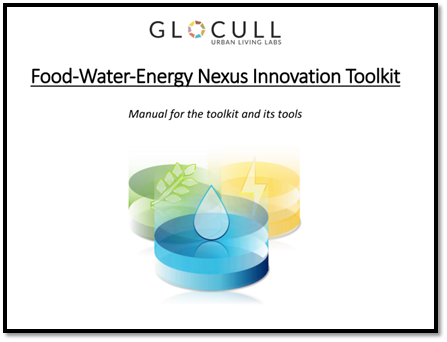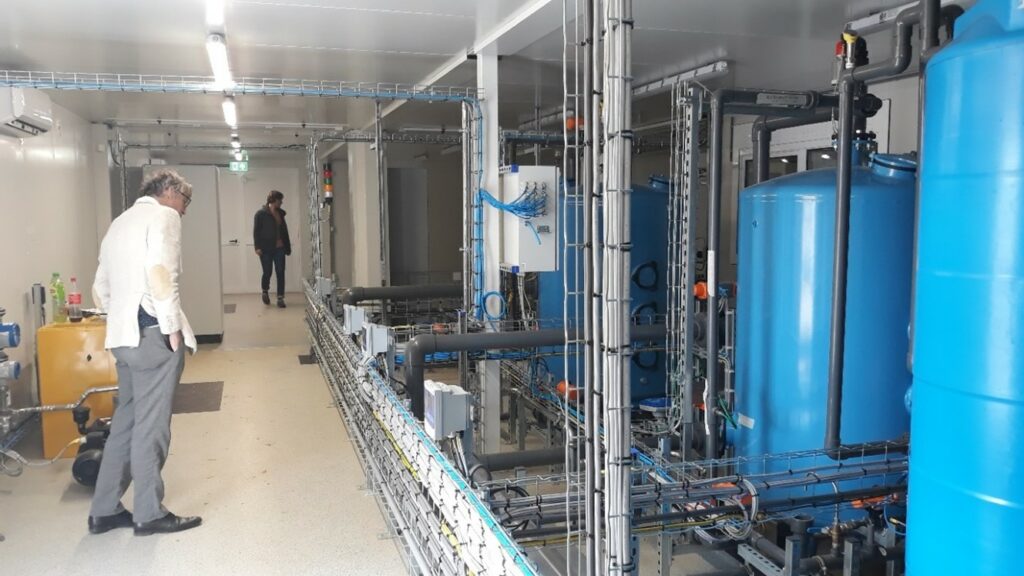Join JPI UE
Faq
FAQ
Please click here for the frequently asked questions we collected.
If you have an additional questions you are welcome to mail us at info@jpi-urbaneurope.eu
Framing urban development issues as local problems that need local solutions is a useful strategy for bringing together a wide range of urban actors around a shared objective. This effectiveness is one reason the urban living lab approach works. This approach explicitly creates city-level forums and spaces called urban living labs (ULLs) to bring disparate urban actors together to cocreate shared development plans for their cities. Unfortunately, this approach currently has one important weakness: it cannot tell us if a proposed innovation could be harmful when considered beyond the local scale. Since scarcities in food, water and energy are ever-increasing and global in dimension, the GLOCULL project aimed to overcome this weakness by producing a toolkit that allows ULLs to create and assess city-level development scenarios for their impacts beyond the local level. GLOCULL’s project coordinator, Joop de Kraker, tells us how ULLs can keep their eyes on local issues without losing sight of the global picture.
At the beginning of the project, GLOCULL’s researchers quickly found out there were no global assessment tools which ULLs could use in participatory assessment. This finding was the result of an extensive review of over 100 existing tools, the available academic literature, and many interviews with tool developers and users. Most of the existing tools were found to be inaccessible, redundant, and designed without a clear idea of their potential users. Critically, none of them had been designed to be a part of the participatory assessment process. Despite these less than encouraging findings, the review did inform GLOCULL’s researchers on the principles of good design. These principles and learning outcomes will be published in a forthcoming paper on designing tools for participatory assessment. However, Joop was able to offer some preliminary insight, “when designing tools, trying to make them ground-breaking can be counterproductive… instead we worked with the ground that was already there to make it more productive.”
“when designing tools, trying to make them ground-breaking can be counterproductive… instead we worked with the ground that was already there to make it more productive.”
This sentiment about using existing resources is reflected in the project’s toolkit. Some parts of the toolkit are deliberately built using existing resources and tools. Joop emphasises the project was not about making something new for the sake of it, its aim was about giving its target users practical tools for participatory assessment. In this case, their target users were urban living lab coordinators responsible for directing participatory assessment activities. The toolkit is intended to be flexible and applicable in any setting where participatory assessment and cocreation are the key goals. To ensure a variety of ULL contexts can use the toolkit, it comes with a manual which explains the three modules that enhance the workflow of participatory assessment sessions. Specifically, the toolkit enhances two aspects of participatory assessment: stakeholder knowledge about the Food-Water-Energy Nexus (FWE Nexus) and the assessment tools for evaluating a potential city-level innovation’s impacts beyond the local level. The FWE Nexus concept sees the interrelations and connections between food, water and energy as one holistic system.

A nexus approach is advantageous to global assessment as it makes decision-makers consider complex causal chains and loops and encourages them to see the wider impacts of a plan aimed at one goal. For example, in a country like the Netherlands, where water resources used to be abundant, ULL participants may be tempted to take water availability for granted when planning urban agricultural interventions. Yet, if they listen to the Guardian podcast in module one, they learn about the interconnections between food production and water resources, whilst becoming acutely aware that water supply is globally dwindling due to climate change. This gives a ULL’s participants a chance to reflect on and consider the merits of irrigation systems such as micro-irrigation, which are less water-intensive. Since climate change is increasing the probability of drought on a macro-scale, drought is an important thing to consider in long-term planning for FWE, even in the countries like the Netherlands. GLOCULL has also worked to ensure these nexus effects are also understood at the city scale.
Providing critical understanding at the city-scale, GLOCULL’s system overview tool shows participatory planners how a potential innovation would impact the FWE Nexus interrelations within a given city. In the first step, the tool produces a picture showing the different components of the FWE Nexus for a particular city, this picture includes the flows of energy and matter between all these components (farms, waste processing facilities, power stations etc.). As participatory assessment continues, the tool produces a new picture showing what would happen if a proposed innovation were added to the city’s FWE system. For example, in the Netherlands case, the tool produced a picture of what would happen if a black water treatment system was created. It showed that some of the food waste flow would be redirected away from green waste and general waste processing centres into a black water treatment facility that would reduce the domestic use of high-quality drinking water and the discharge of wastewater. Importantly, the nexus effects of city-level plans can be quantified at both the city and macro scales, as evidenced by the project’s quantitative assessment tool.

This new quantitative assessment tool calculates the potential impacts of a proposed innovation on the FWE interrelations within a city in addition to offering an overall impact score. This tool has also been designed to be used in participatory assessment sessions. It exists in a simple excel format, so different sectoral specialists, researchers and municipal actors can all bring data into a single mutually understood system. After the data is collated, the tool can produce impact scores for every nexus relation within a city. This can be used to compare the status quo with a scenario where an innovation is introduced. For instance, if an urban agricultural innovation is shown to drastically increase water consumption, then the impact score of water use is likely to increase compared to the status quo. The quantitative tool goes beyond these city-level FWE interrelations and can produce impact scores for a city’s local surroundings, the regional level, the national level, and even the global level in addition to calculating the impact of scaling up a city-level innovation to the national level.
The project’s new quantitative assessment tool calculates the potential impacts of a proposed innovation on the FWE interrelations within a city in addition to offering an overall impact score.
Joop says the simplicity of their approach and their focus on design means GLOCULL has managed to produce a toolkit that will enhance participatory assessment by making it more reflective of complex FWE interrelations and making assessment processes go beyond the local context without sacrificing a city-level perspective. Still, he thinks more work needs to be done on disseminating the toolkit. He says, “we need to do more work on getting this toolkit to the people who can use it.” This seems particularly significant considering, unlike many FEW toolkits, this toolkit was designed with a very specific audience and context in mind: assisting Urban Living Lab coordinators in their efforts to make local participatory assessment a positive force for achieving regional, national and global objectives.